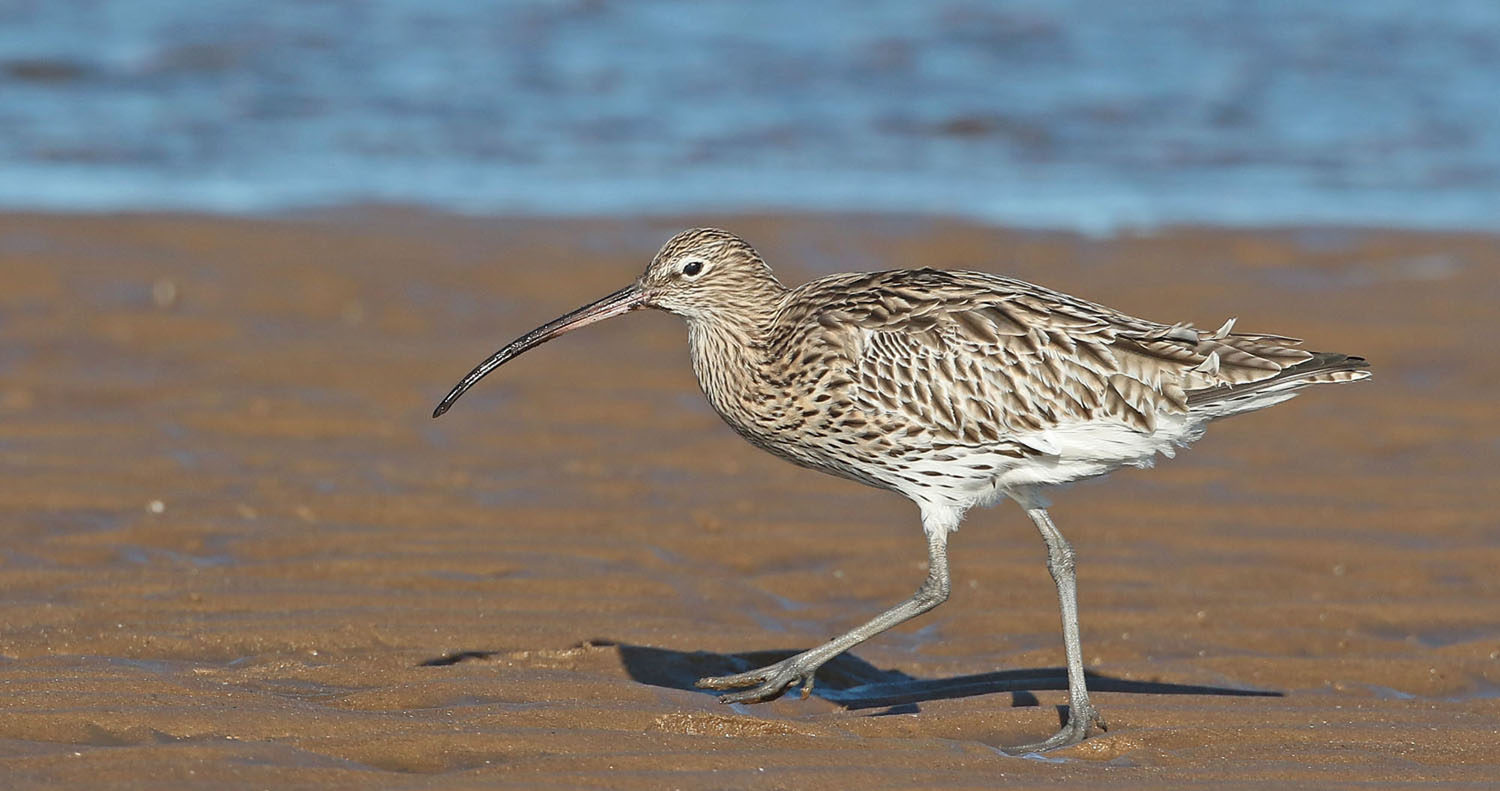


We’re delighted to be involved in the important national efforts to recover one of our most beloved and threatened birds – the Curlew. The Curlew is a beautiful looking bird, recognisable by its long, downward-curved bills (headline photo credit: Les Bunyan), or by its eerie call often heard on a moonlit winter evening on the marshes.
The Curlew (Eurasian Curlew to be precise) has suffered dramatic declines in population in Britain over the past 40 years and is currently red-listed. Figures show a 42% drop in the breeding population between 1995 and 2008 alone. And in 2018, just six curlew chicks were reported to have fledged across all of southern England.
This project to restore the bird involves a technique we call “headstarting”. Curlew eggs are collected from airfields where ordinarily they would have been destroyed (more on that later). They are then incubated, hatched, and reared, before being moved to a release site where they spend a few weeks habituating to their environment and eventually are released into the wild.
The project is a mammoth effort from a wide number of groups. Natural England are leading and coordinating the project, working with staff from the Wildfowl and Wetlands Trust (WWT), the Defence Infrastructure Organisatoin and the Royal Air Force to collect the eggs. For Eastern England, Pensthorpe Natural Park – which has great expertise in this type of conservation – incubate, hatch and rear the chicks. Along with the Sandringham Estate, Wild Ken Hill is one of the release sites for the birds. Our job is to ensure that the birds are kept safely in release pens for several weeks. Finally, the British Trust for Ornithology are monitoring the post-release behaviour of the birds (and hopefully the success of the project). So there this is a huge, coordinated effort to save this wonderful bird. Kudos to all involved.
Wild Ken Hill and the Sandringham Estate have been selected for release sites becuase they offer the kind of habitats in which these birds can thrive. The West Norfolk coast is also not too far from the existing population in the Brecks, connecting these populations could help overall species recovery.
So far 106 Curlew eggs have been collected the military and civil airfields. Airfields have become ideal for ground-nesting birds, likely because of the open, grassy habitat and lack of predators. Unfortunately, many of the nests were previously destroyed because of the air saftey risk. This is, however, understandable: birdstrike at its worst could cause planes to crash and loss of life. But now these eggs are going to be headstarted, following the process above.
84 of the eggs collected are at Pensthorpe (at the time of writing), either having already hatched, or still being incubated. We are expecting a portion of the resultant juveniles to arrive at Wild Ken Hill in the next few weeks (mid July). How exciting! Stay tuned for more updates!